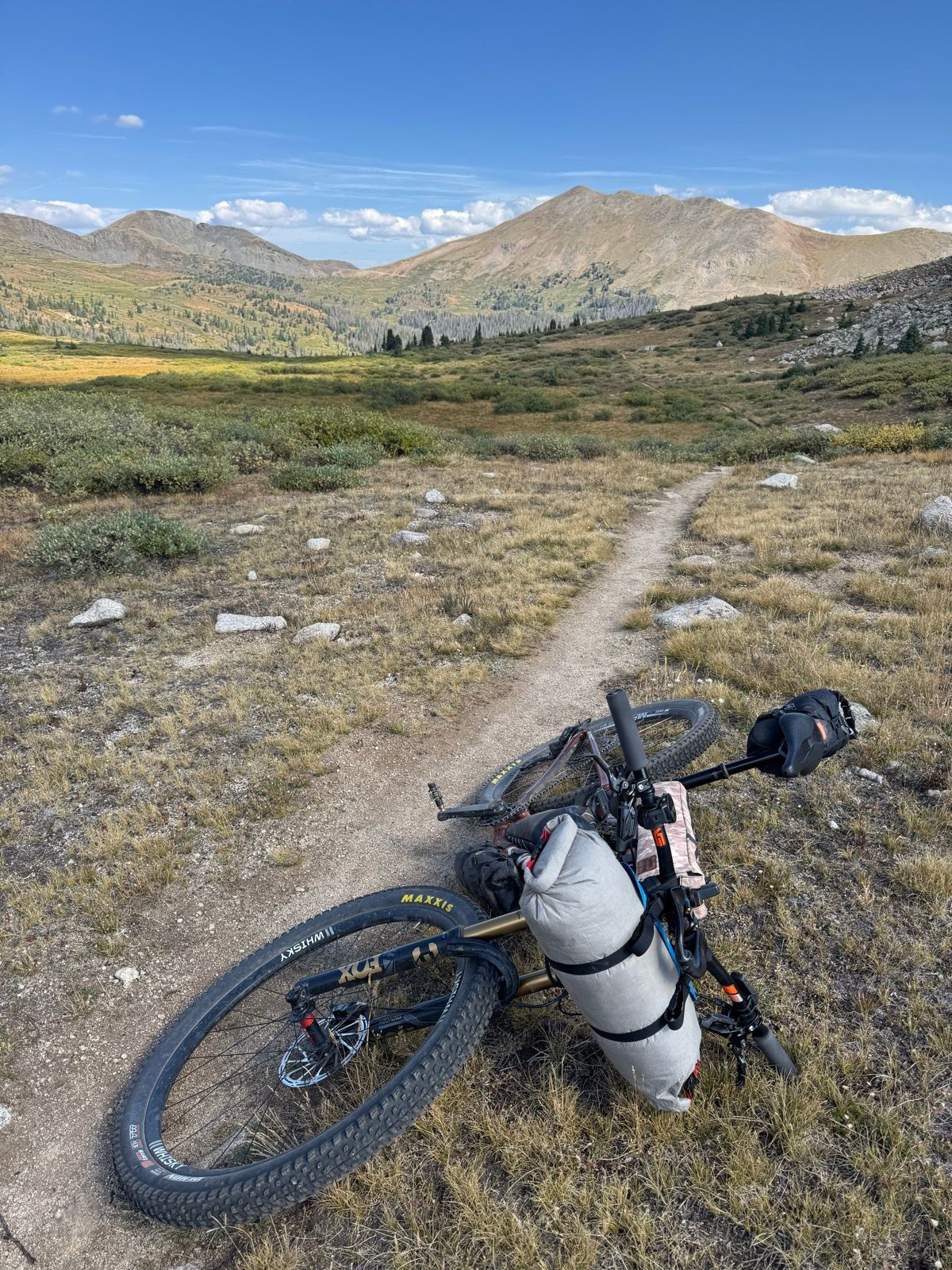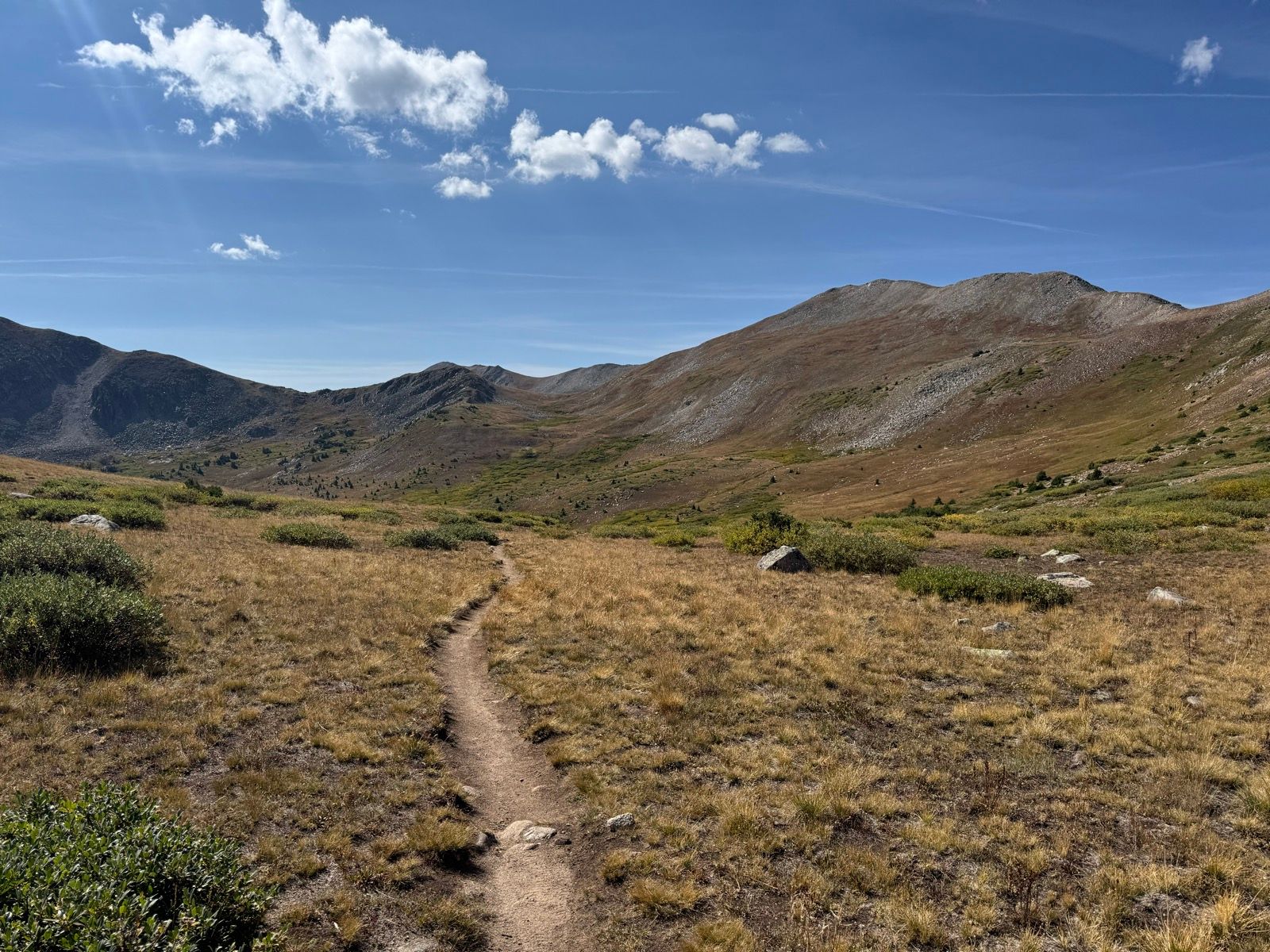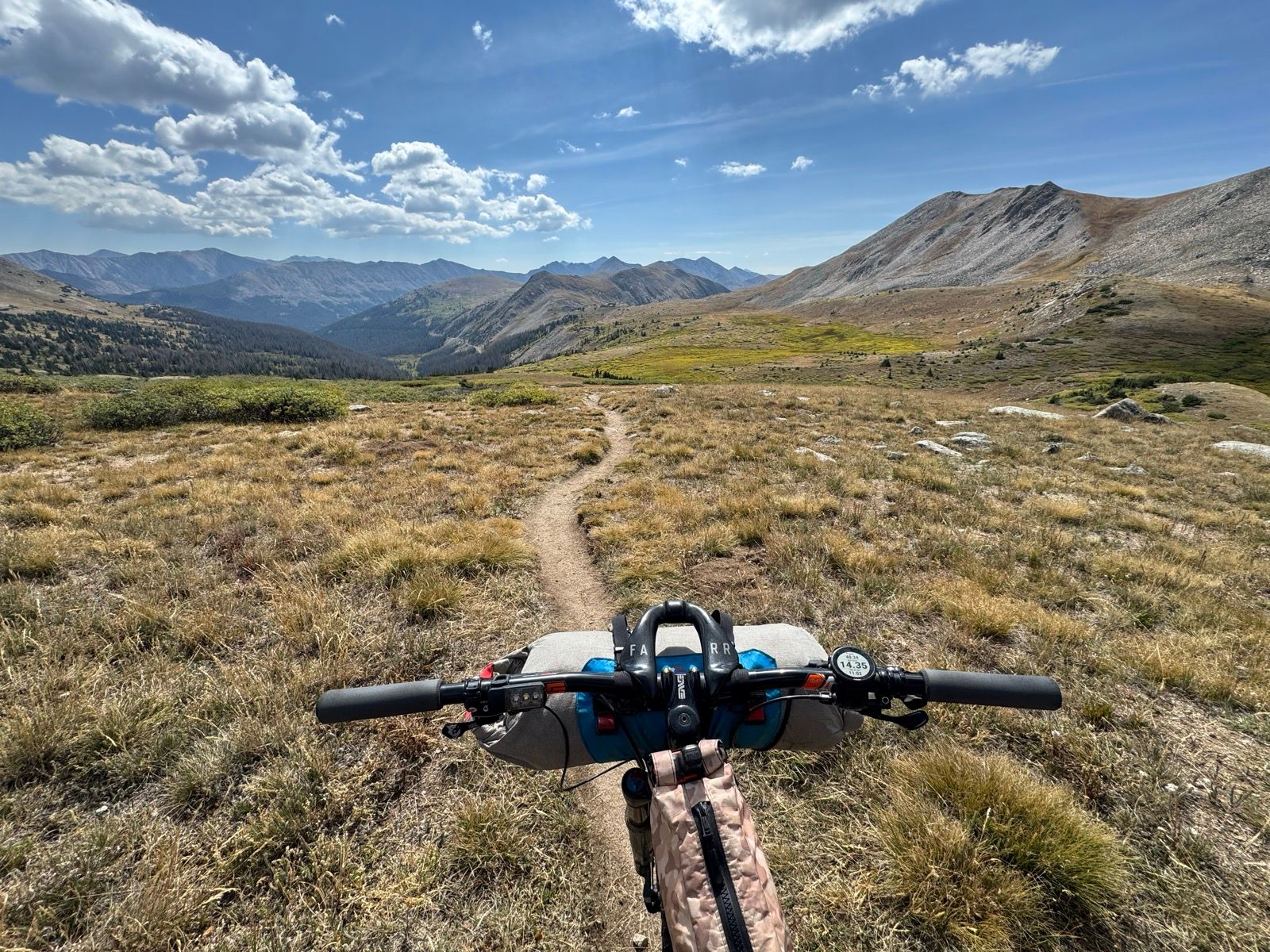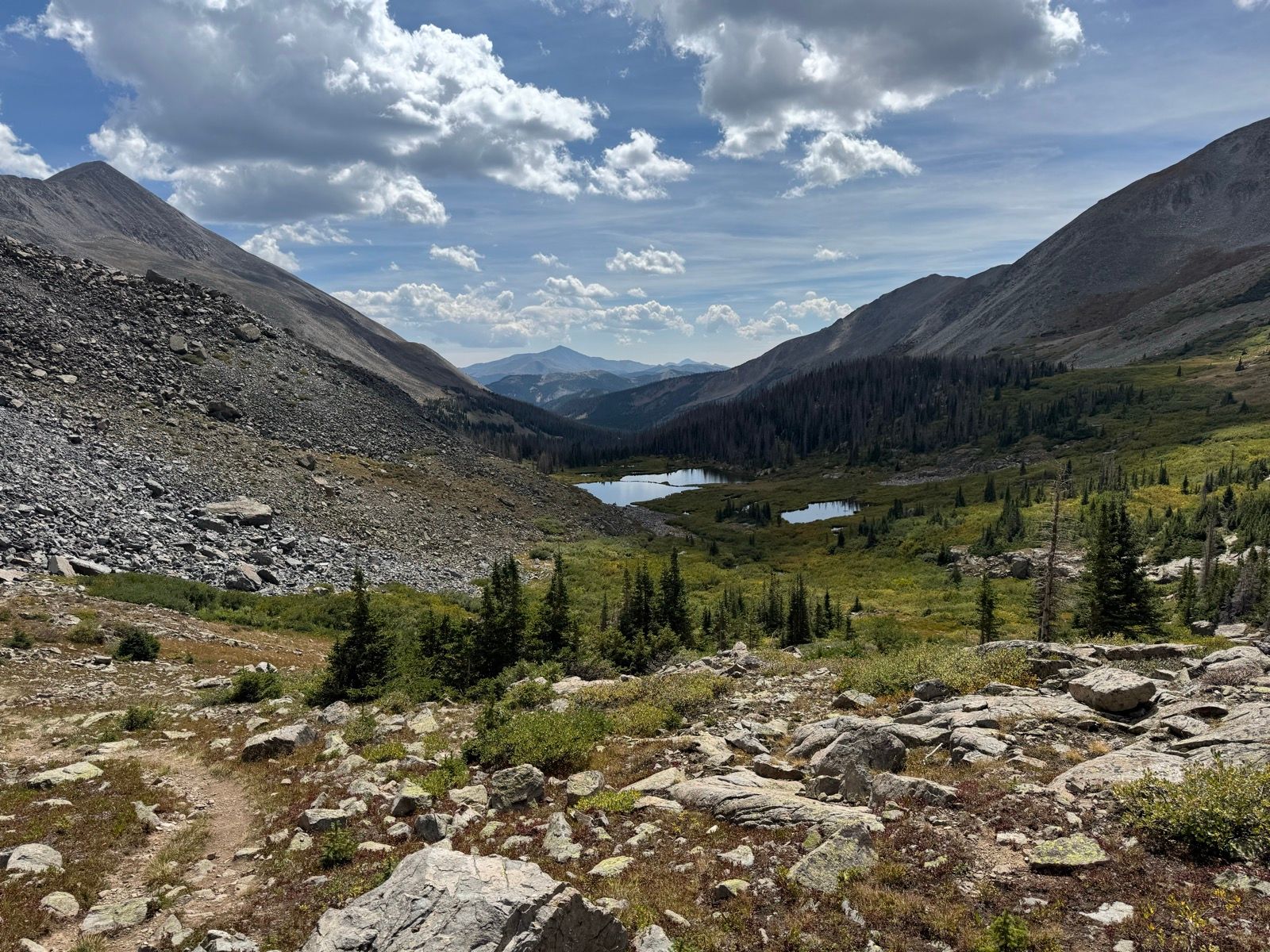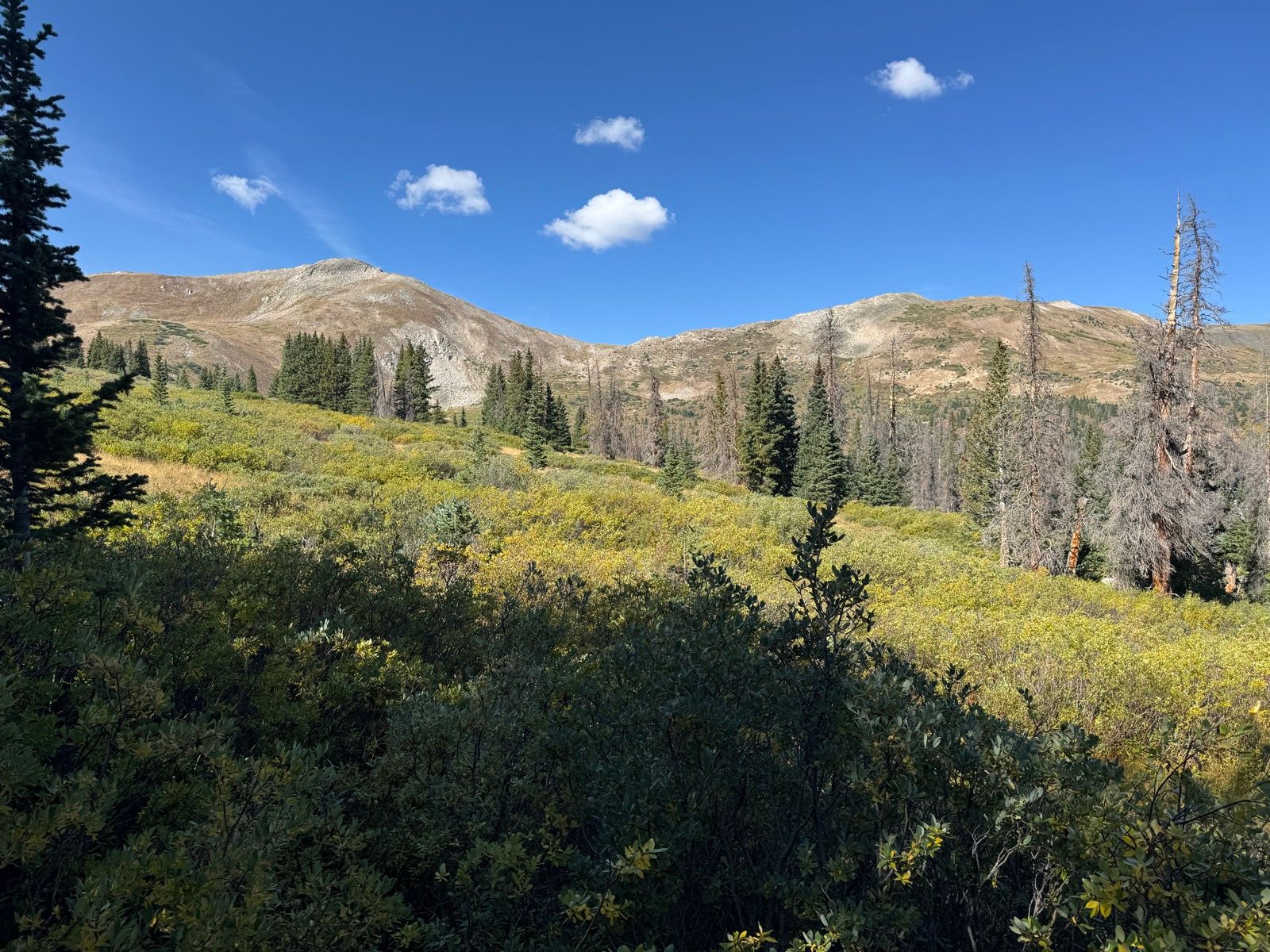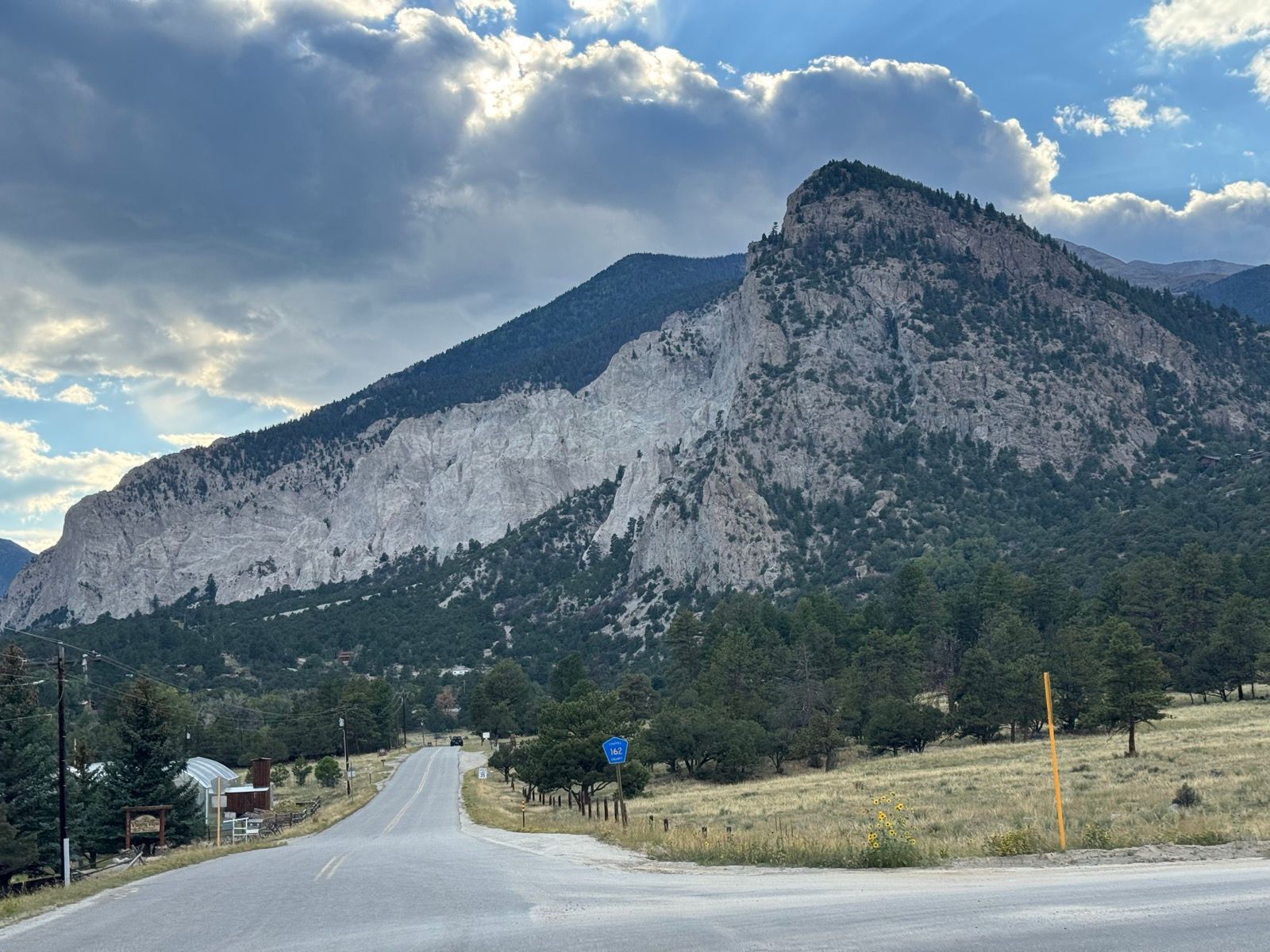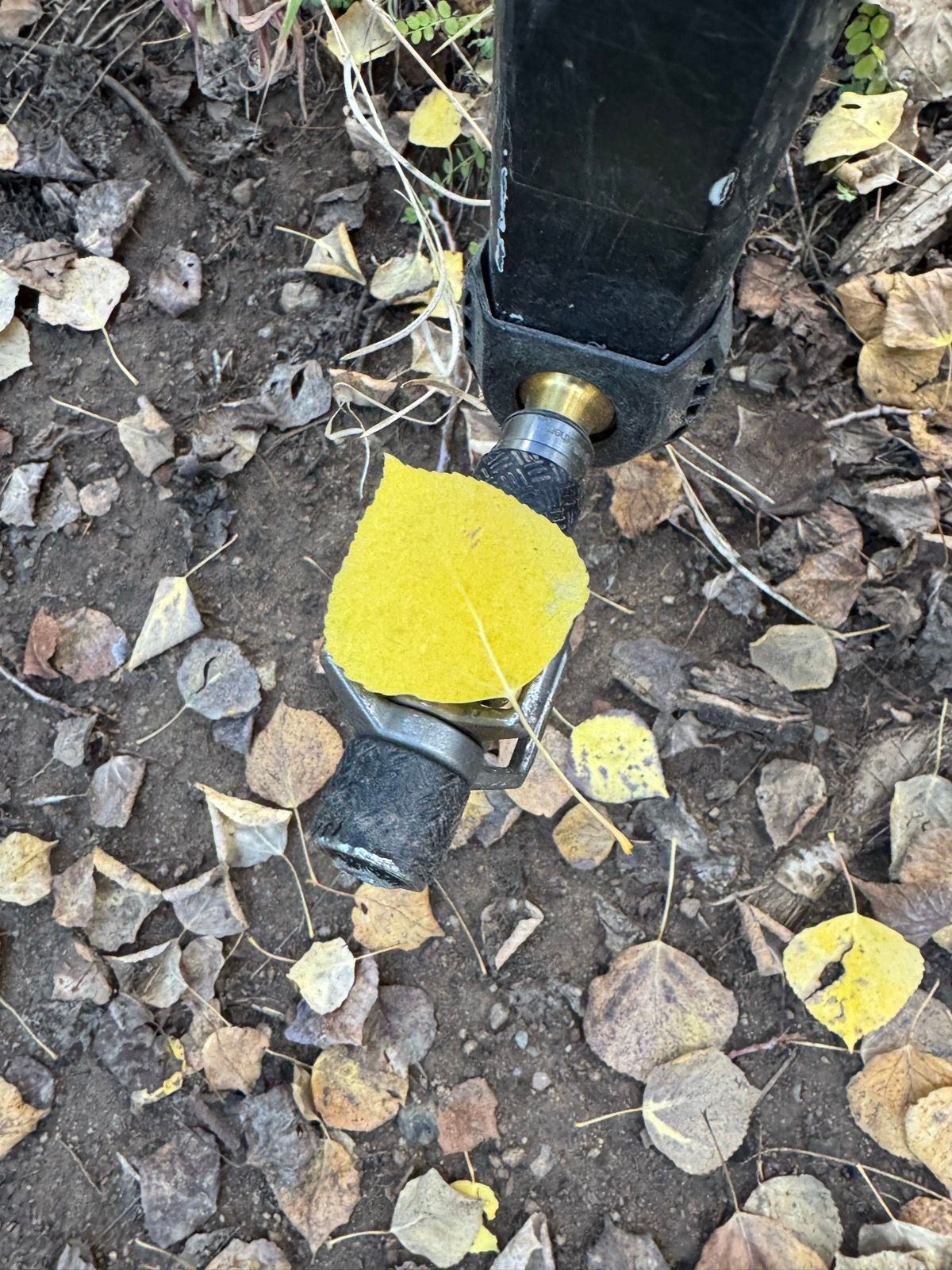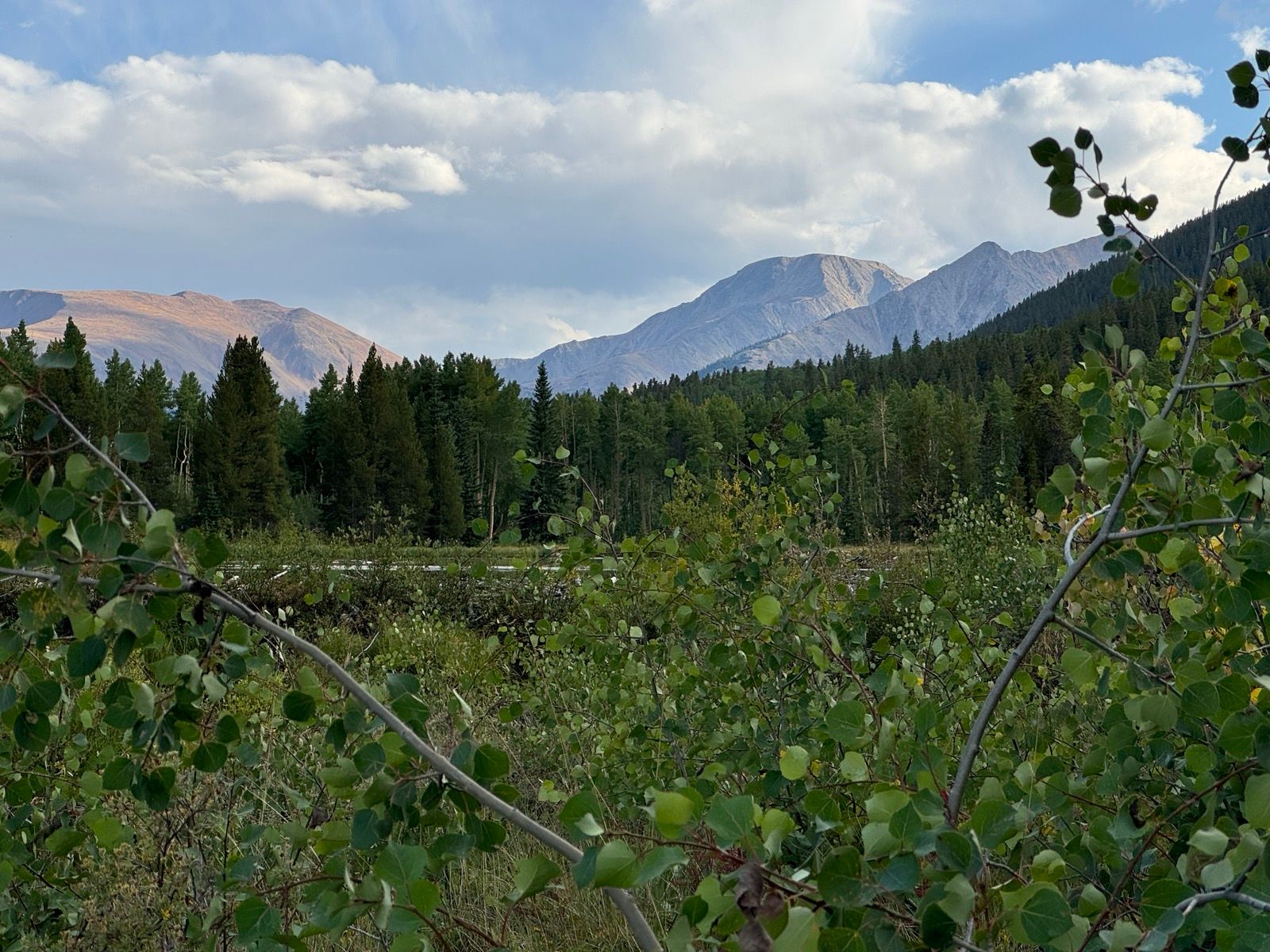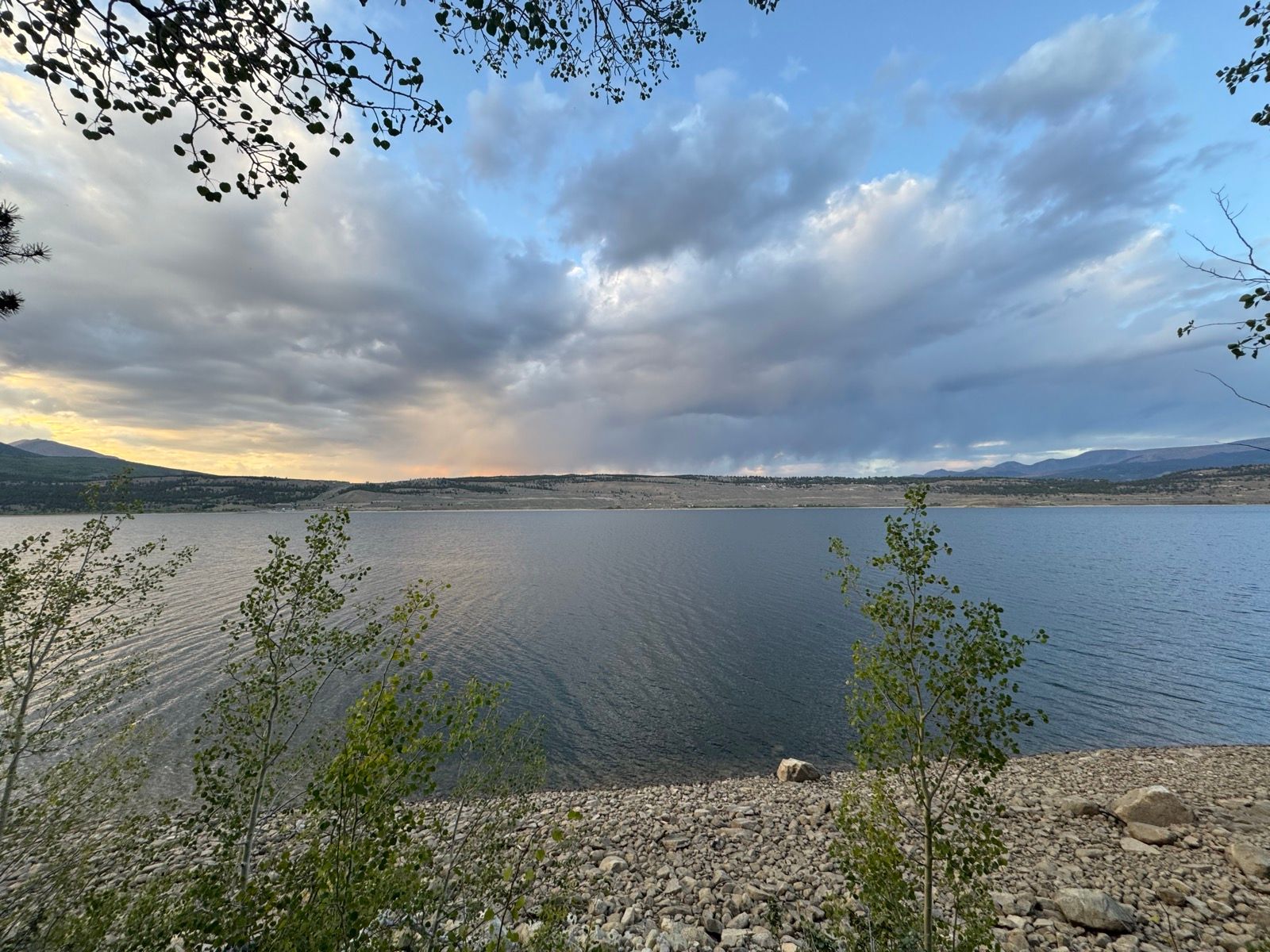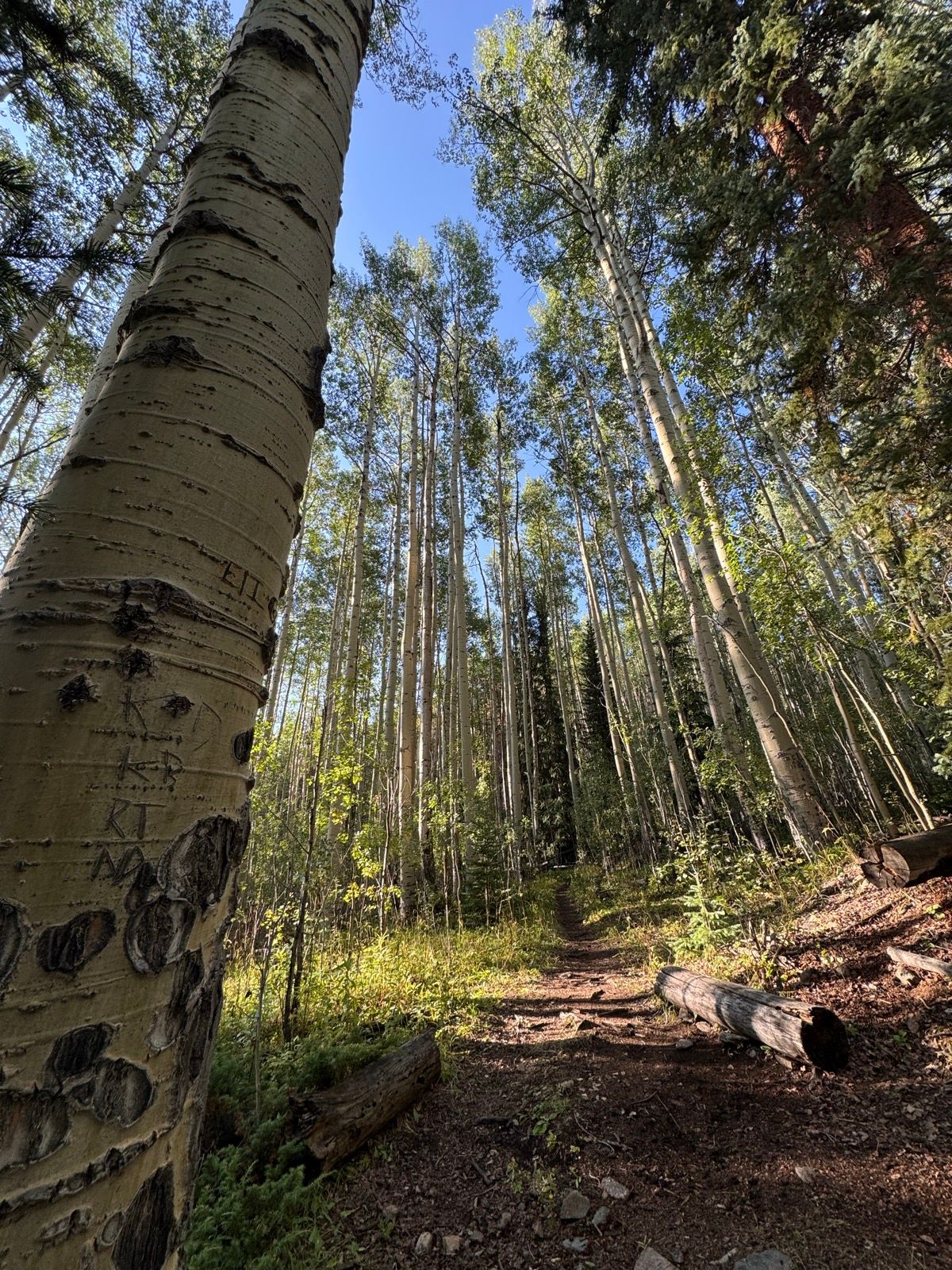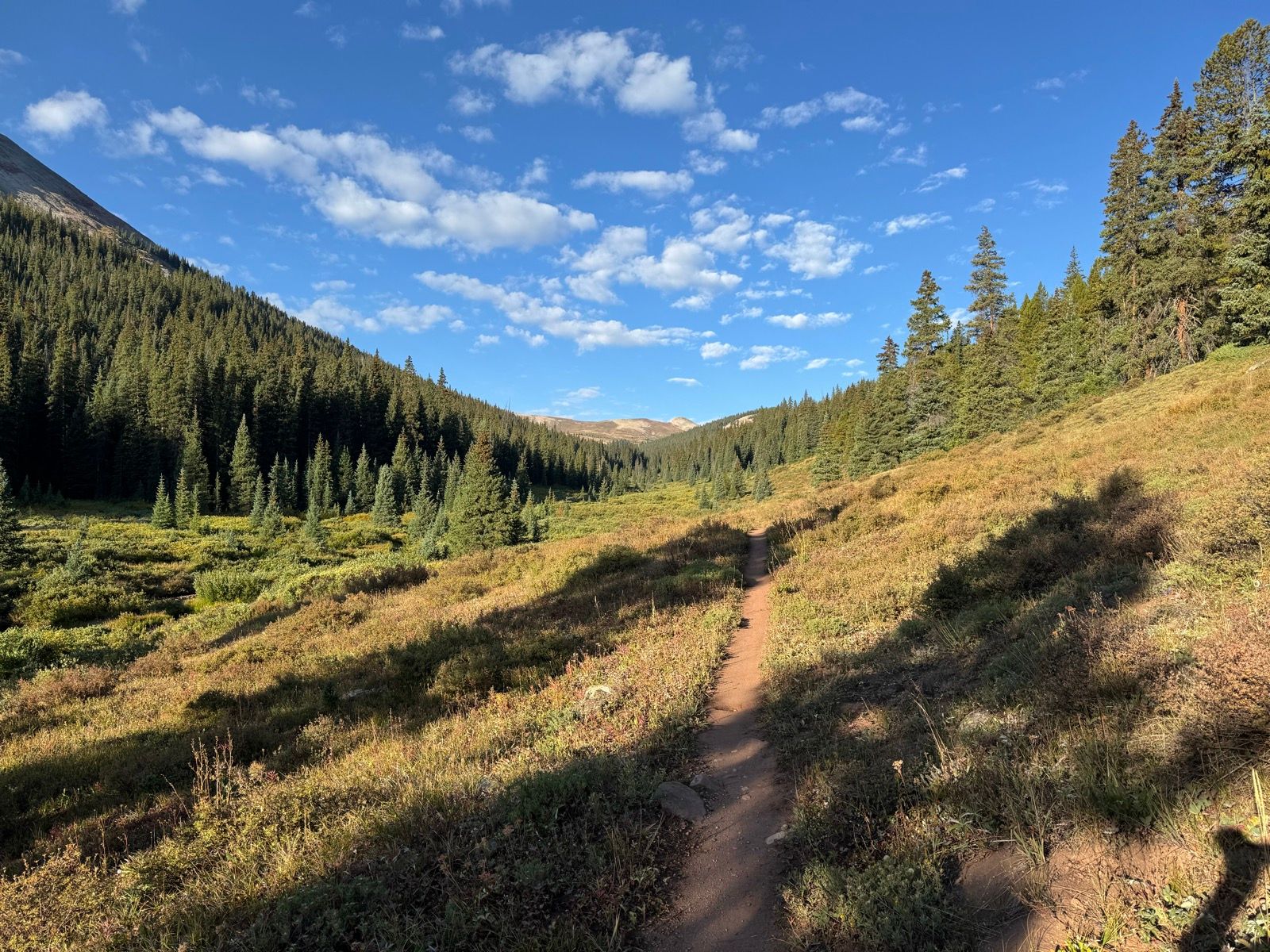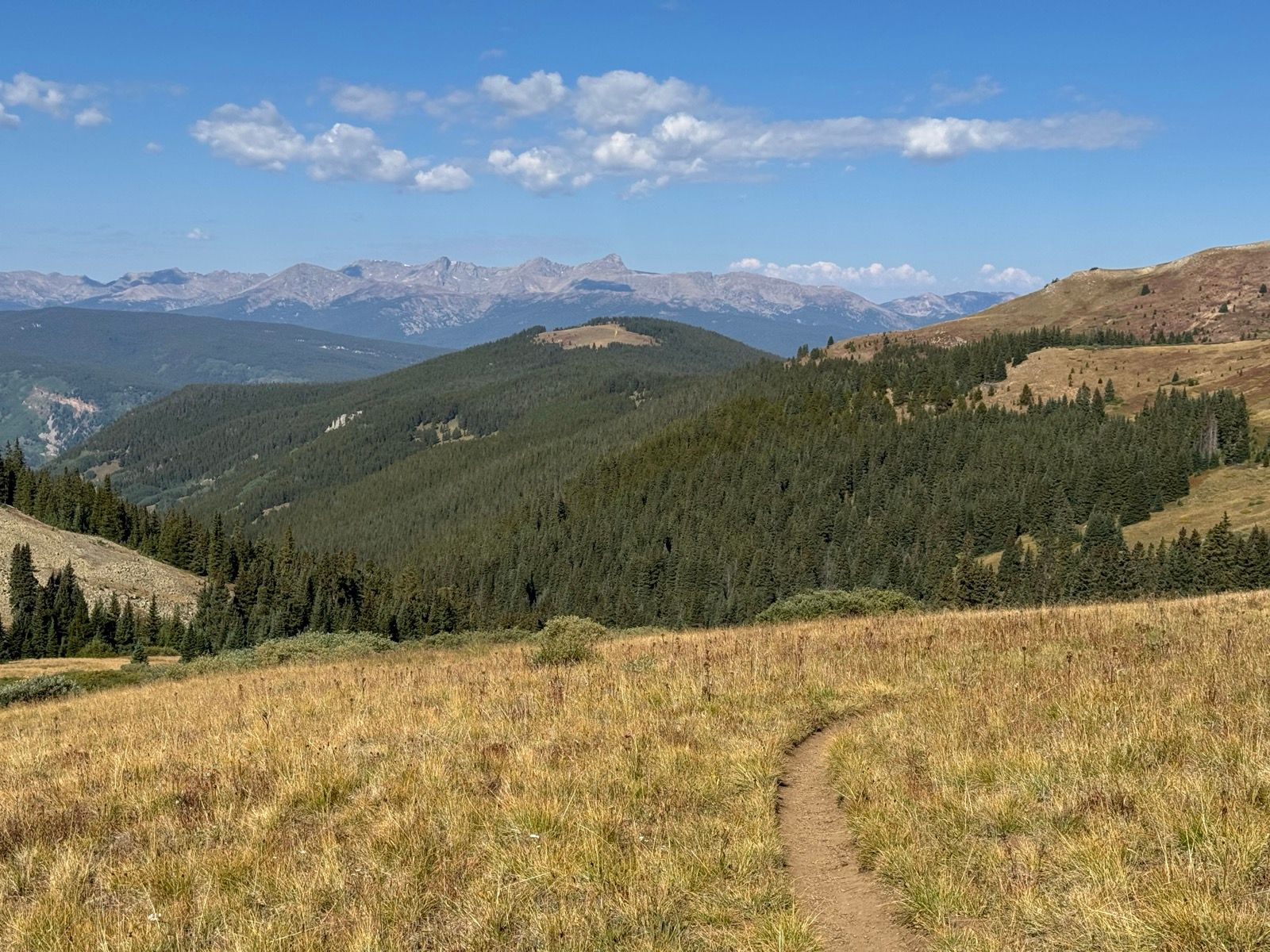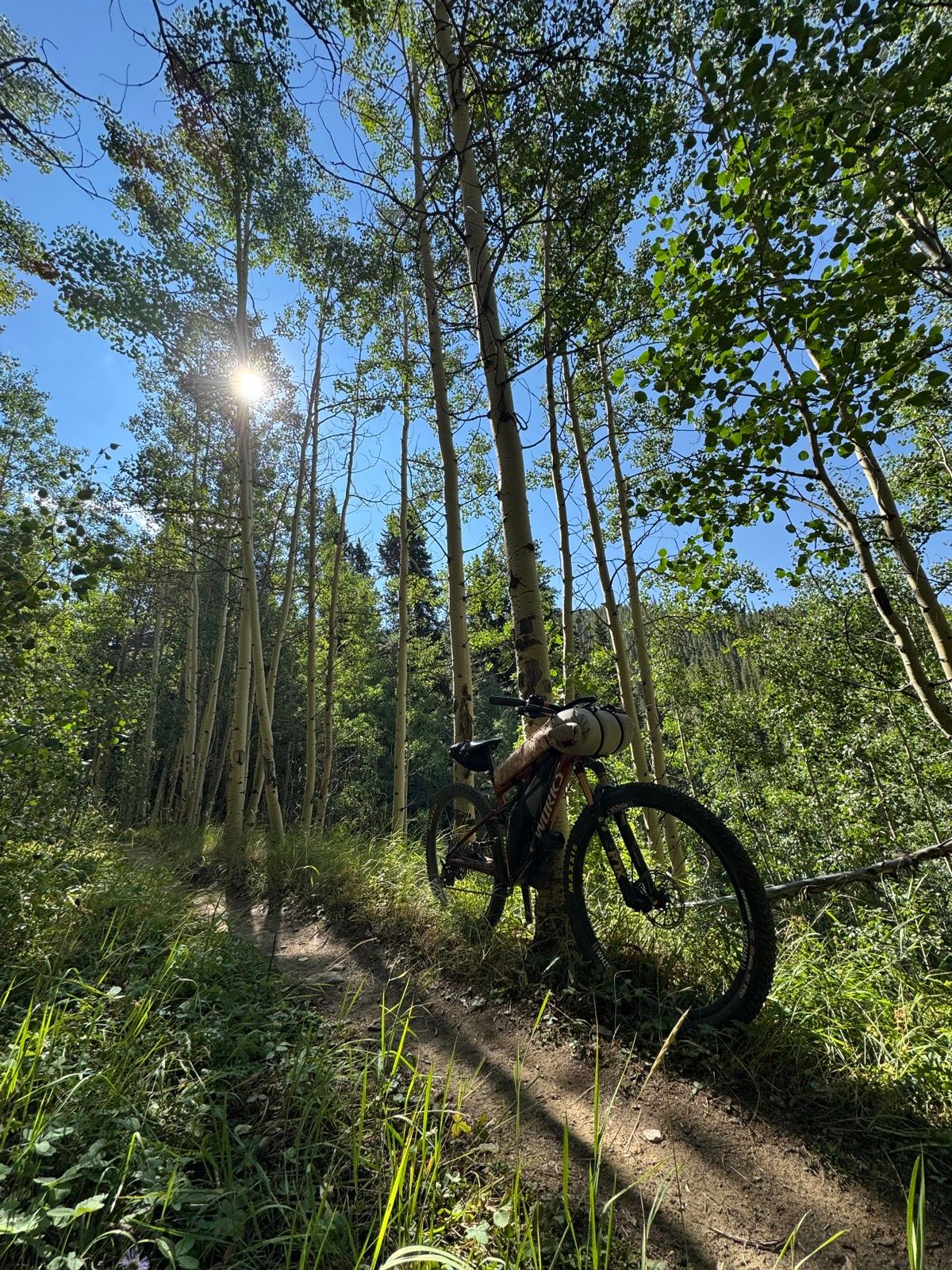47: Terra Incognita
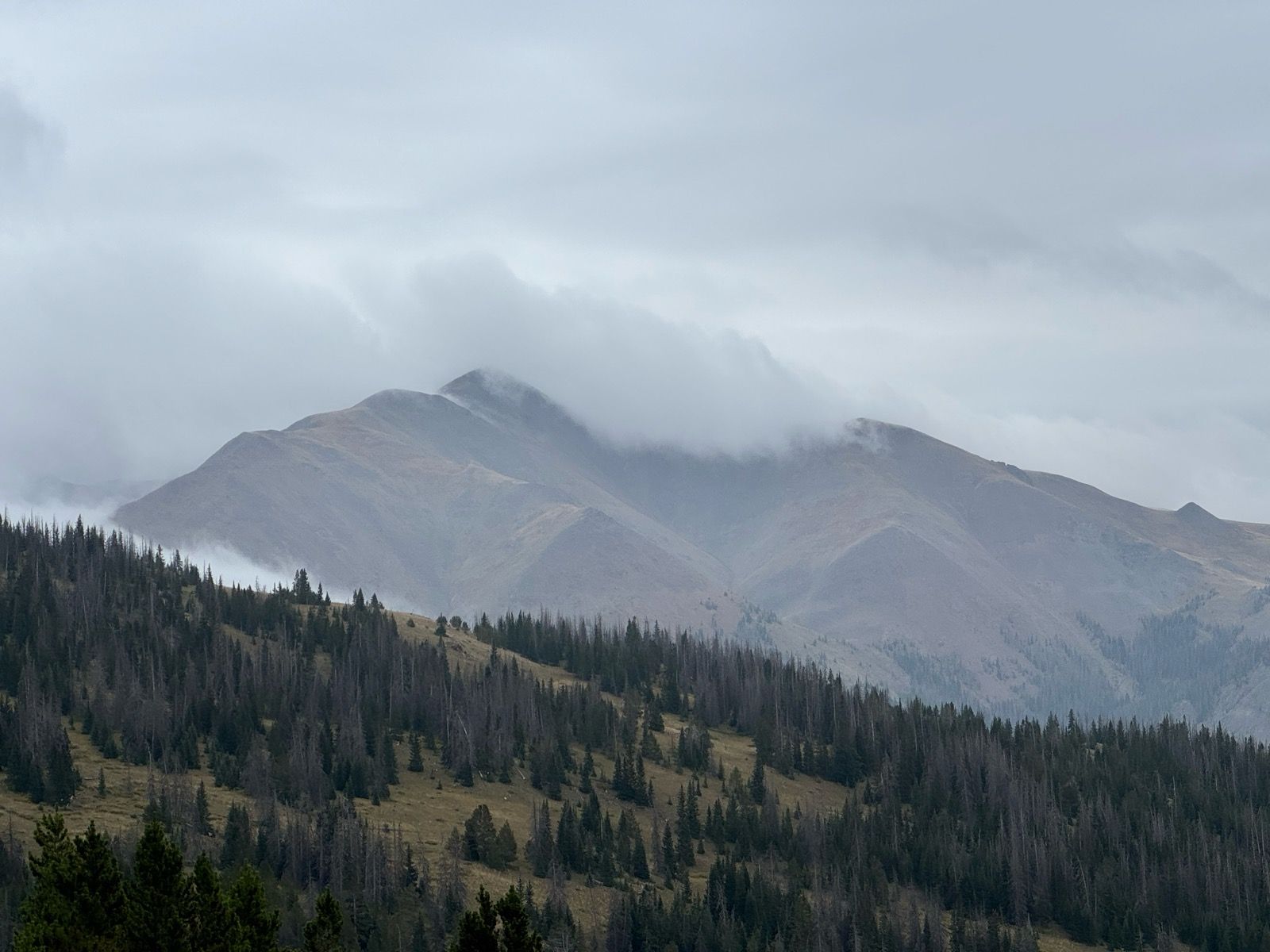
This route to date has tied together into a continuous strand the Wyoming of my childhood, the Colorado of my mid-20s, and the Montana of my 30s. These landscapes are now woven together with a thread that binds together eras of my life and many different disciplines of engaging lustily with landscapes and mountains that has constituted my adolescent and adult lifetime.
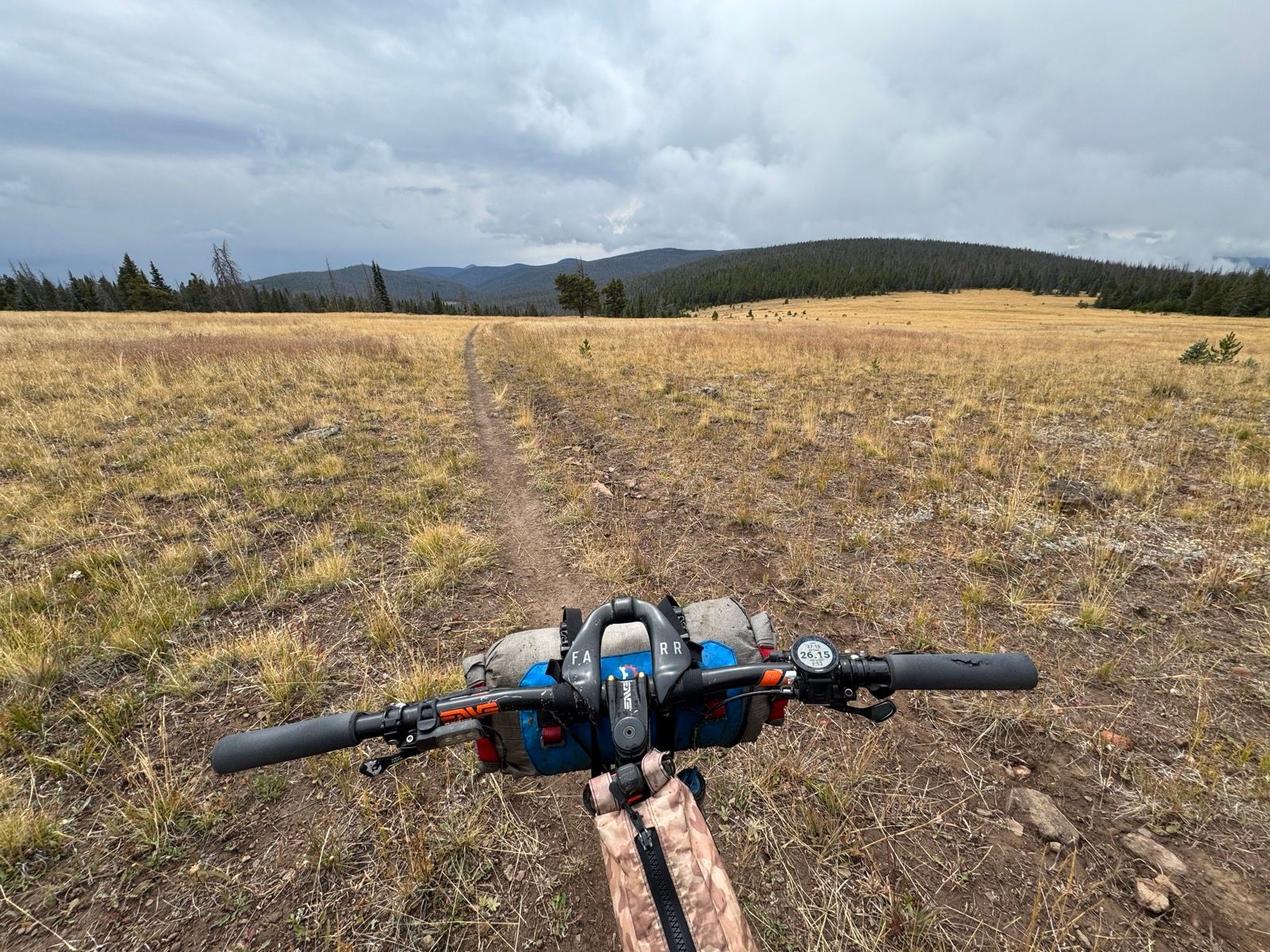
That history and experience is strewn across the last 2,000 miles—and is abruptly ending.
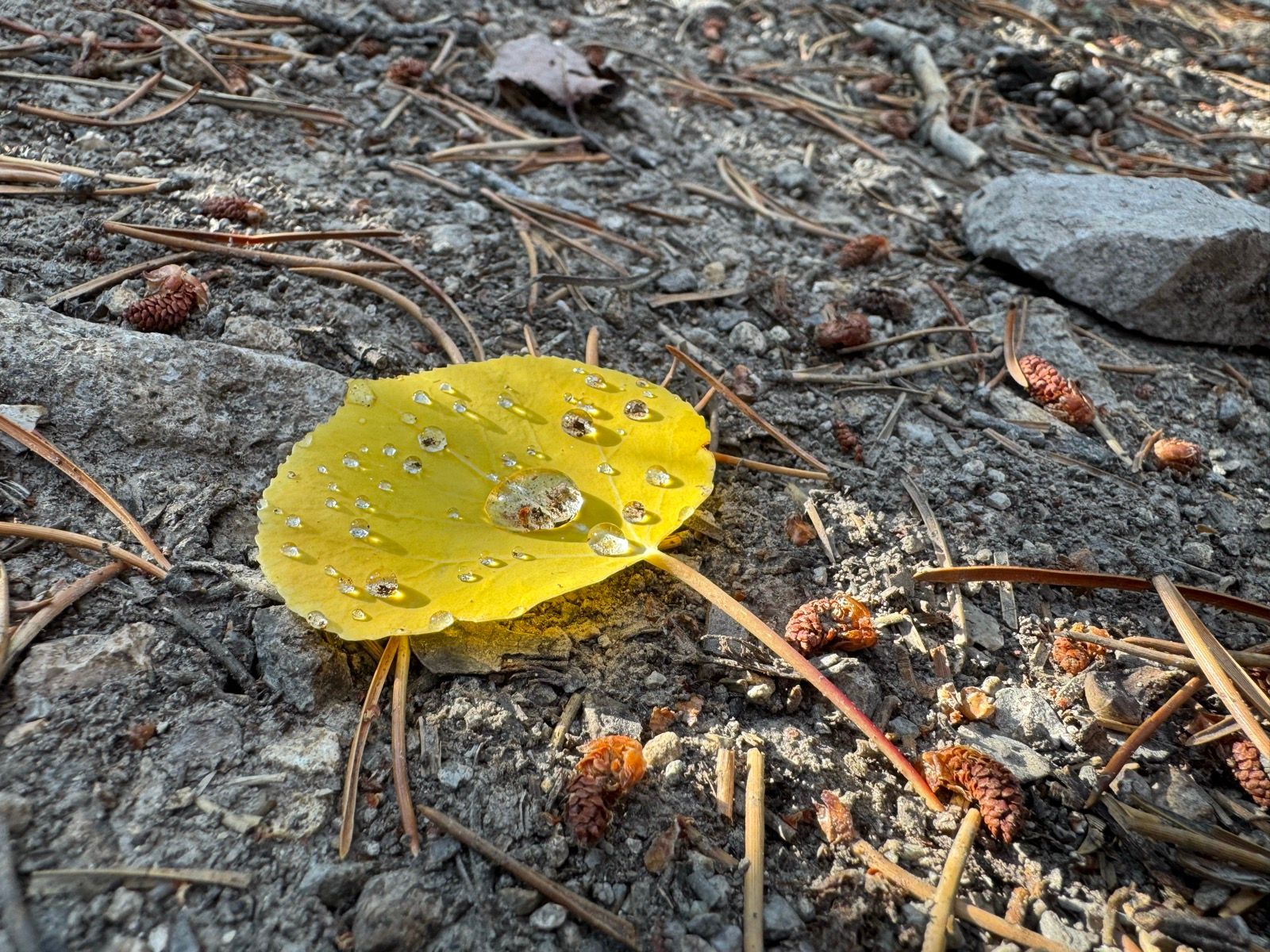
From this point forward, I am now entering upon a terra incognita—landscapes and places largely unfamiliar and unknown to me. Places with names like La Garita, Weminuche, Chama, Abiquiu.
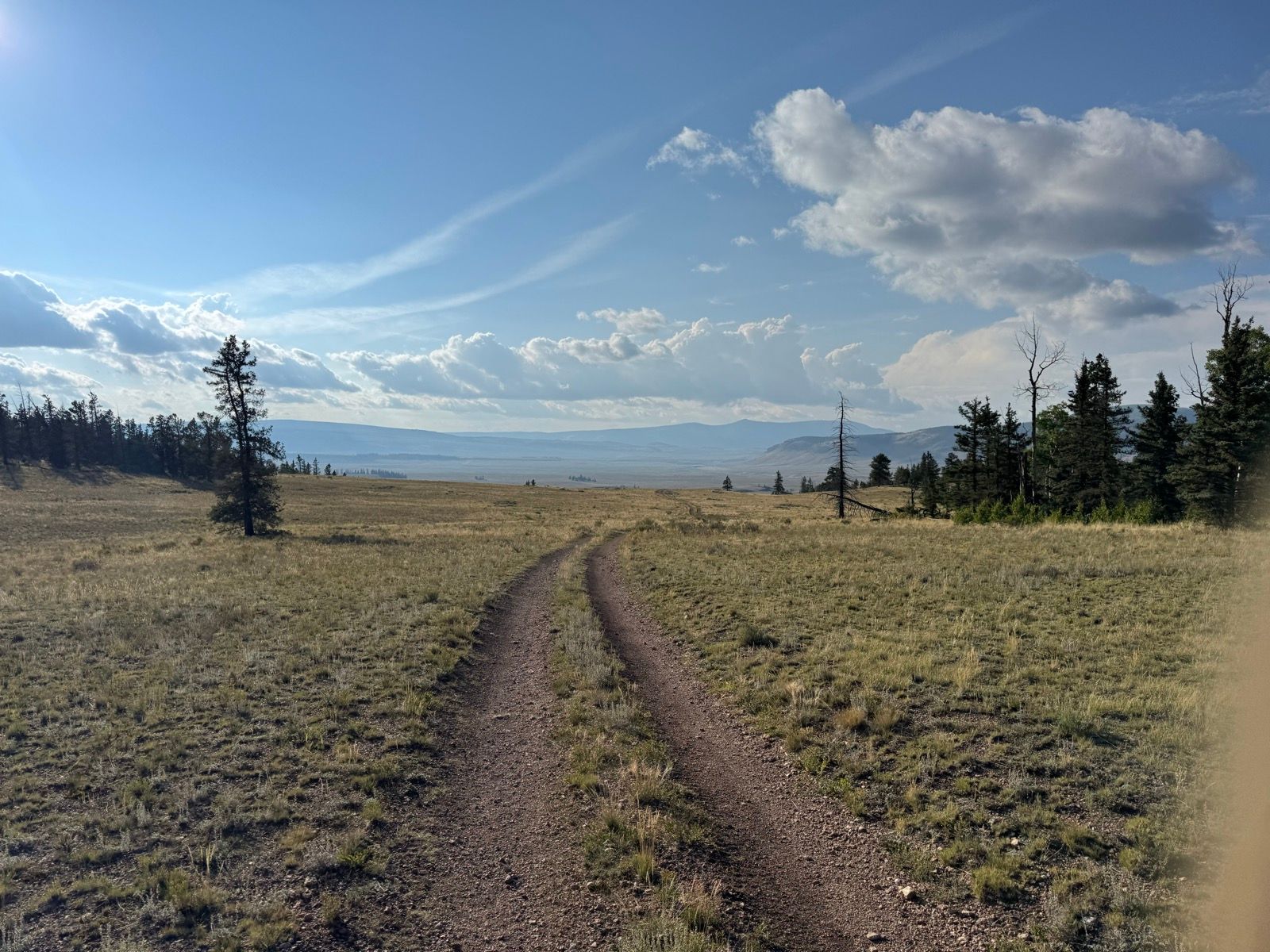
I’m looking forward to transitioning from linking the familiar to experience new places!
—
All but the last two hours of today’s riding was on pleasant single track—fairly efficient if not particularly inspiring in the rain and heavy mist.

When I laid out my route originally, I planned to skip the last ~35 mile segment where the Colorado Trail and CDT overlap to avoid having to double back those miles (the CDT makes a western-jutting semicircle at the San Juans, mostly ringed by wilderness areas where bikes are prohibited). Given that I’m ahead of schedule and my current pace would land me in South Fork for my next resupply on a Sunday when the post office is closed, I may add some miles tomorrow and ride some portion of that western stretch.
Listening to: Running with Sherman by Christopher McDougall
